
CHEMOECOLOGY
Scope & Guideline
Advancing Knowledge in Chemical Ecology Since 1990
Introduction
Aims and Scopes
- Chemical Communication:
Exploration of how organisms use chemical signals for communication, including pheromones, allelochemicals, and semiochemicals, to influence behaviors such as mating, foraging, and defense. - Defensive Chemistry:
Investigating the production and variation of secondary metabolites that serve as chemical defenses against herbivores and pathogens, highlighting the ecological roles of these compounds. - Ecological Interactions:
Studying the interactions between species, such as predator-prey dynamics and plant-insect relationships, and how these interactions are mediated by chemical cues. - Chemical Ecology of Invasive Species:
Researching the chemical ecology associated with invasive species, including their chemical interactions with native species and ecosystems. - Metabolic and Physiological Responses:
Understanding how organisms' metabolic pathways and physiological processes are affected by external chemical cues, including environmental stressors.
Trending and Emerging
- Microbial Interactions and Chemical Ecology:
An increasing focus on the role of microbial communities in chemical signaling and ecological interactions, especially concerning plant health and soil biogeochemistry. - Chemical Ecology of Insect Behavior:
Growing interest in how chemical cues affect the behavior of insects, particularly in relation to host-plant selection and predator-prey interactions. - Invasive Species Dynamics:
A trend towards exploring the chemical ecology associated with invasive species, particularly how they interact chemically with native species and ecosystems. - Omics Approaches in Chemical Ecology:
Emerging use of omics technologies (genomics, metabolomics, etc.) to study chemical processes and interactions, providing deeper insights into the biochemical mechanisms underlying ecological interactions. - Climate Change Impacts on Chemical Ecology:
Research examining how climate change affects chemical signaling and interactions within ecosystems, reflecting a growing concern for the impact of global changes on ecological relationships.
Declining or Waning
- Geochemical Interactions:
Research on the chemical interactions between organisms and their abiotic environment, such as soil chemistry, has seen a decrease, possibly as the field moves towards more organism-centric studies. - Historical Chemical Ecology:
Studies that analyze historical or fossilized chemical signatures or interactions are less frequently published, indicating a shift towards contemporary ecological interactions. - Broad-spectrum Chemical Applications:
Research focusing on broad-spectrum chemical applications in agriculture or pest control is waning as the journal emphasizes more ecological and evolutionary perspectives.
Similar Journals

Chemical Engineering Journal Advances
Transforming Ideas into Impactful Research in Chemical Engineering.Chemical Engineering Journal Advances, published by Elsevier, is a premier open-access journal dedicated to advancing research and innovation in the field of chemical engineering. With its inception in 2020, the journal has quickly established itself as a key player in disseminating high-quality, peer-reviewed articles, boasting an impressive Q1 ranking in Chemical Engineering and related disciplines for 2023. The journal covers a broad spectrum of topics, including industrial processes, environmental chemistry, and innovative manufacturing techniques, making it essential reading for researchers and professionals aiming to stay at the forefront of chemical engineering advancements. With its commitment to open access, Chemical Engineering Journal Advances ensures that groundbreaking research is readily available to the global scientific community, fostering collaboration and knowledge exchange. Situated in the Netherlands, the journal supports its authors with a robust platform for impactful research dissemination, highlighted by a solid position in the Scopus ranks, indicating its influence and relevance in the field.
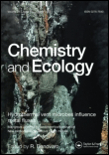
CHEMISTRY AND ECOLOGY
Illuminating the Chemistry Behind Ecological SystemsCHEMISTRY AND ECOLOGY is a prestigious academic journal published by TAYLOR & FRANCIS LTD, dedicated to advancing the interdisciplinary understanding of chemical processes in ecological systems. With an ISSN of 0275-7540 and an E-ISSN of 1029-0370, this journal has been a significant contributor to the fields of Earth and Planetary Sciences, Ecology, and Environmental Science since its inception in 1982. The journal is proudly ranked in the second quartile (Q2) in multiple categories, including Earth and Planetary Sciences and Ecology, reflecting its high impact within these disciplines. Despite not being an open-access publication, it provides valuable insights through rigorous peer-reviewed articles that explore the intricate relationships between chemical phenomena and ecological dynamics. Researchers, professionals, and students can rely on CHEMISTRY AND ECOLOGY for the latest findings and methodologies that drive innovation and understanding in environmental chemistry and ecology, enhancing their work and education in this critical area of study.
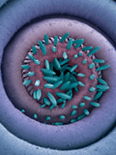
Annual Review of Entomology
Pioneering Insights in Ecology and EvolutionAnnual Review of Entomology, published by Annual Reviews, is a premier journal dedicated to advancing the understanding of entomology through comprehensive review articles from leaders in the field. With a focus on Ecology, Evolution, Behavior, and Systematics and Insect Science, the journal ranks in the top quartile (Q1) as of 2023, reflecting its significant impact and relevance in these disciplines. Based in the United States, the Annual Review of Entomology has been a trusted resource since its inception, providing critical insights that inform research, policy, and education in entomology. Researchers and professionals will find valuable reviews that synthesize current knowledge and highlight future directions in insect research. The journal's impressive standing, as indicated by its rankings—first in both Agricultural and Biological Sciences categories—emphasizes its pivotal role in shaping scientific discourse and innovation.
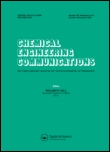
CHEMICAL ENGINEERING COMMUNICATIONS
Advancing the Frontiers of Chemical Science.Chemical Engineering Communications, published by Taylor & Francis Inc, is a distinguished journal within the realms of Chemical Engineering and Chemistry. With an ISSN of 0098-6445, this journal plays a pivotal role in disseminating innovative research, critical reviews, and insightful discussions that encompass a broad spectrum of topics in these fields. The journal boasts a commendable Q2 ranking in the 2023 category of chemical engineering and general chemistry, reflecting its significant contribution to the scientific community. Operating under a rigorous peer-review process, the journal attracts high-quality submissions from global researchers. Although currently not an Open Access journal, it provides extensive archive access for users interested in exploring past advancements from its inception in 1973 through to 2024. With a commitment to advancing knowledge and fostering collaboration among academia and industry, Chemical Engineering Communications remains an essential resource for professionals and students aiming to stay abreast of the latest developments in chemical sciences.
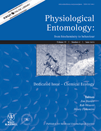
PHYSIOLOGICAL ENTOMOLOGY
Bridging Physiology and Evolution in EntomologyPHYSIOLOGICAL ENTOMOLOGY is a prestigious journal published by WILEY, focusing on the intricate relationships between physiological processes and the ecological and evolutionary dynamics of insects. With an ISSN of 0307-6962 and E-ISSN of 1365-3032, this journal has been at the forefront of insect science since its inception in 1976, contributing significantly to the understanding of insect physiology and behavior. The journal has established itself within the academic community, currently holding a position in the Q2 quartile for both Ecology, Evolution, Behavior and Systematics and Insect Science, highlighting its relevance and impact in these fields. Although there are no Open Access options available, researchers and practitioners can rely on its regular publications to stay abreast of pivotal discoveries and methodologies in insect physiology. With a commitment to advancing the field through rigorous peer-reviewed research, PHYSIOLOGICAL ENTOMOLOGY serves as an essential resource for researchers, professionals, and students alike.
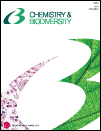
CHEMISTRY & BIODIVERSITY
Bridging Chemistry and Biodiversity for a Sustainable Future.CHEMISTRY & BIODIVERSITY is a prominent peer-reviewed journal published by Wiley-V C H Verlag GmbH, serving as a vital resource in the intersecting fields of biochemistry, bioengineering, and miscellaneous chemistry. With an ISSN of 1612-1872 and an E-ISSN of 1612-1880, this journal has established itself over its converged years from 2004 to 2024 as a platform for innovative research that contributes significantly to the understanding of chemical processes in biological systems. The journal's impact is reflected in its category quartiles, particularly notable in Q2 in Chemistry and various Q3 and Q4 rankings across multiple related disciplines. While it is not an open-access publication, it continues to attract a diverse readership, including researchers, academics, and students, who are keen to explore the complexities of chemistry's role in biodiversity. Through high-quality articles and comprehensive reviews, CHEMISTRY & BIODIVERSITY plays an essential role in fostering advances in molecular biology and biochemistry, positioning itself as a key contributor to the ongoing discourse in the life sciences.

International Journal of Biology and Chemistry
Bridging Disciplines for Groundbreaking DiscoveriesInternational Journal of Biology and Chemistry (ISSN: 2218-7979; E-ISSN: 2409-370X) is a distinguished peer-reviewed journal published by AL-FARABI KAZAKH NATIONAL UNIVERSITY, dedicated to advancing the interdisciplinary fields of biology and chemistry. This journal aims to foster a comprehensive understanding of biological systems and chemical processes, thereby promoting collaborative research and innovative methodologies. With a rigorous selection process and commitment to quality, the journal provides a platform for original research articles, reviews, and case studies that contribute to the scientific community's knowledge base. Although specific metrics such as H-Index and Scopus rankings are currently not listed, the journal continues to be an important resource for researchers, professionals, and students alike. By providing open access to high-quality research outputs, the International Journal of Biology and Chemistry is poised to make a significant impact in its field, bridging gaps between biological sciences and chemistry while encouraging groundbreaking discoveries.

TURKISH JOURNAL OF CHEMISTRY
Bridging Theory and Application in ChemistryTURKISH JOURNAL OF CHEMISTRY, published by the Tubitak Scientific & Technological Research Council Turkey, serves as a significant platform for the dissemination of research in the diverse field of chemistry. Since its inception in 1996, this peer-reviewed journal has made substantial contributions to the body of knowledge within the field, currently holding a respectable Q3 ranking in the category of Chemistry (miscellaneous) as of 2023. Researchers and professionals alike rely on this journal for its wide-ranging discussions, innovative methodologies, and noteworthy findings pertinent to both fundamental and applied chemistry. With an ISSN of 1300-0527 and a commitment to promoting scientific progress, the journal is accessible to a global audience and encourages the open sharing of insights that drive advancements in chemistry. The extended timeframe of convergence until 2024 highlights the journal's dedication to fostering ongoing research and collaboration within the scientific community. As a valuable resource for researchers, professionals, and students, the Turkish Journal of Chemistry aims to inspire new discoveries and facilitate knowledge transfer in a dynamic and evolving discipline.

BIOCHEMICAL SYSTEMATICS AND ECOLOGY
Bridging Disciplines for a Sustainable FutureBIOCHEMICAL SYSTEMATICS AND ECOLOGY, published by PERGAMON-ELSEVIER SCIENCE LTD, is a pivotal journal dedicated to the exploration of the intricate relationships between biochemical processes and ecological factors. With its inception in 1973 and continued activities projected to extend into 2024, the journal serves as a vital resource for researchers and professionals in the fields of biochemistry and ecology. The journal, available in both print (ISSN: 0305-1978) and electronic formats (E-ISSN: 1873-2925), enjoys an esteemed reputation, reflected in its category quartiles of Q4 in Biochemistry and Q3 in Ecology, Evolution, Behavior and Systematics for the year 2023. Despite its varying impact across categories, it remains significant in advancing knowledge and fostering collaboration in the biological sciences. The emphasis on systematic and ecological studies underscores the journal’s commitment to addressing contemporary challenges and innovative research in the realm of biochemical applications to ecological dynamics. As such, it appeals to a broad audience of researchers, professionals, and students eager to contribute to and learn from this interdisciplinary field.

CHEMICAL PAPERS
Shaping the Future of Chemical Research Since 1973Chemical Papers is a distinguished scientific journal published by Springer International Publishing AG, catering to the fields of Biochemistry, Chemical Engineering, and Materials Chemistry. With an ISSN of 0366-6352 and an E-ISSN of 2585-7290, this journal has been a pivotal platform for the dissemination of research findings since its inception in 1973. Over the years, it has maintained a strong academic presence, as evidenced by its Q2 and Q3 rankings in several pertinent categories as of 2023, including Chemical Engineering and Industrial and Manufacturing Engineering. Although the journal is not currently Open Access, it remains an invaluable resource for researchers and professionals across its scope, promoting the advancement of knowledge in chemical sciences and fostering innovation within the industry. The publication is headquartered in Cham, Switzerland, contributing to a global dialogue on chemical research and its applications.